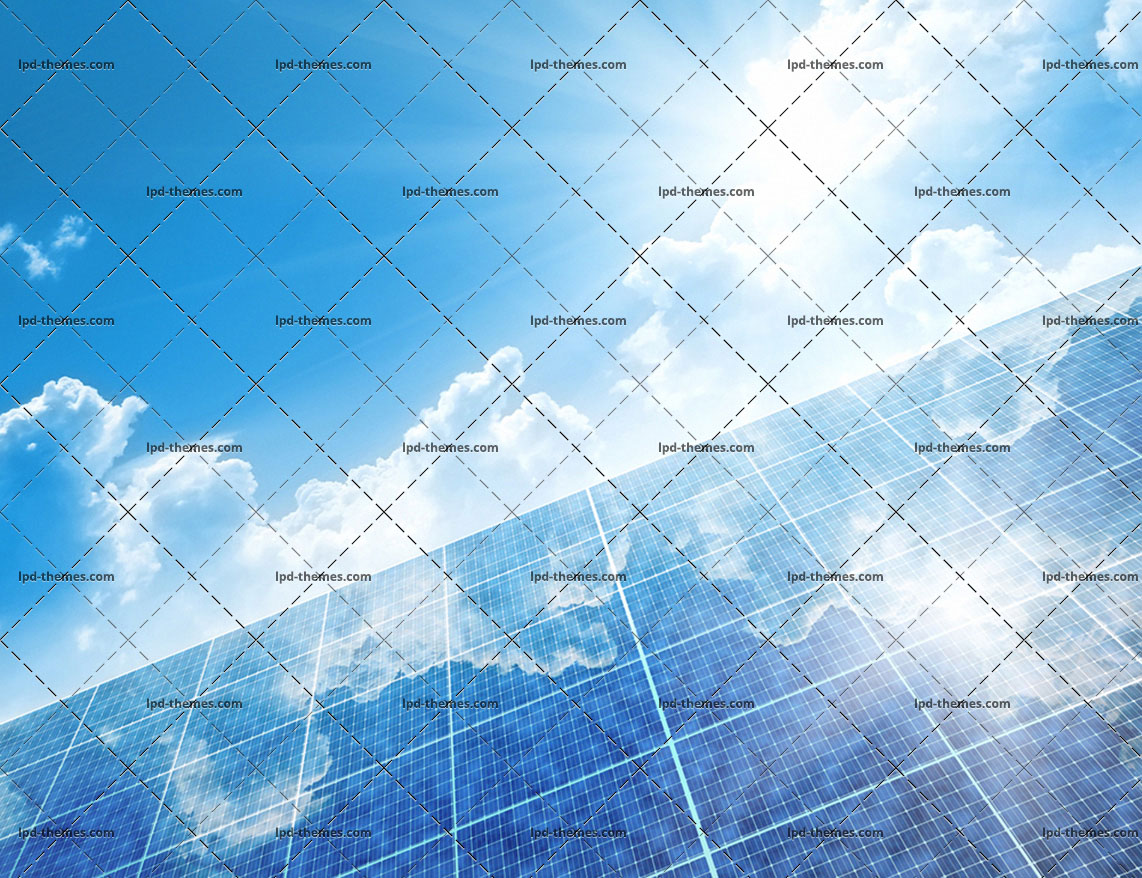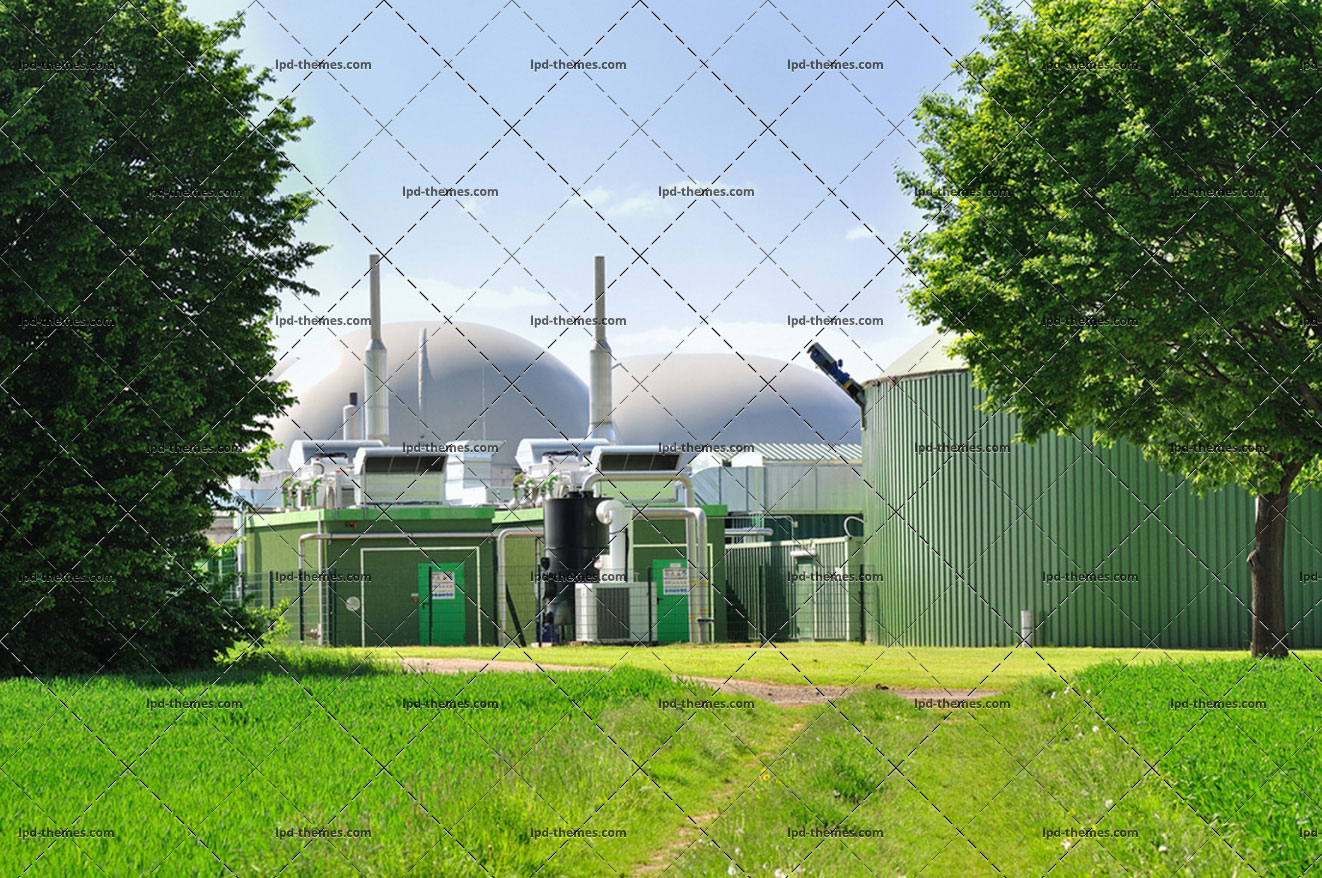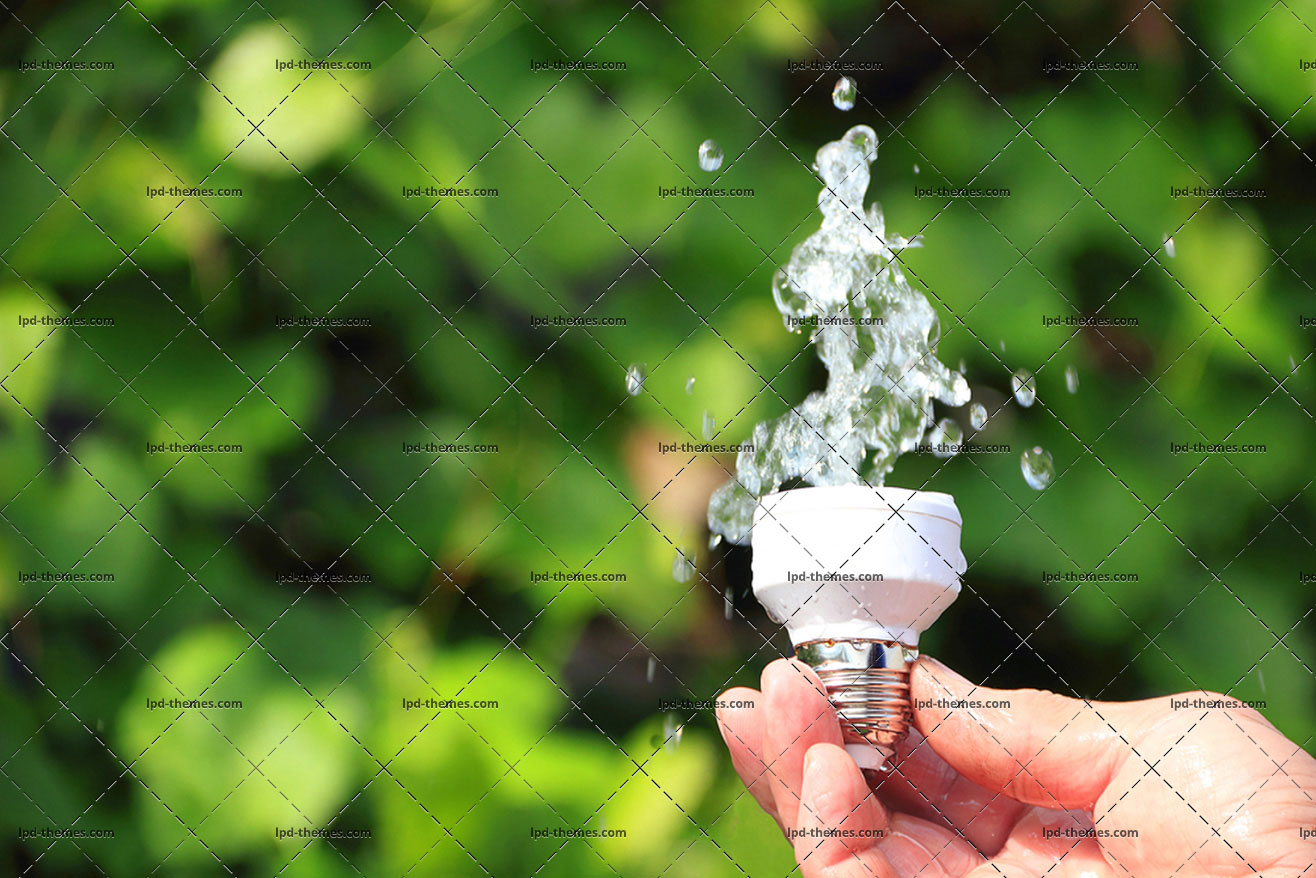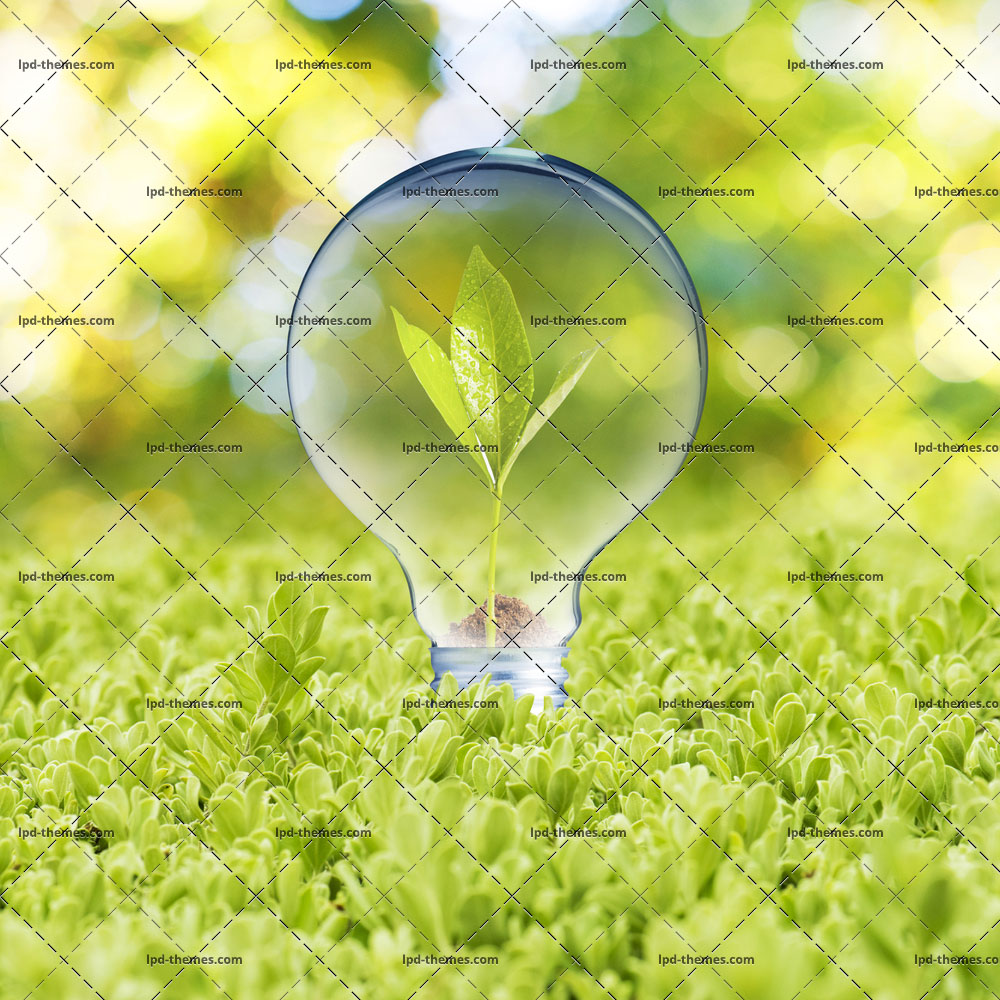Solar Panel

A solar panel is a set of solar photovoltaic modules electrically connected and mounted on a supporting structure. A photovoltaic module is a packaged, connected assembly of solar cells. The solar panel can be used as a component of a larger photovoltaic system to generate and supply electricity in commercial and residential applications. Each module is rated by its DC output power under standard test conditions (STC), and typically ranges from 100 to 320 watts. The efficiency of a module determines the area of a module given the same rated output – an 8% efficient 230 watt module will have twice the area of a 16% efficient 230 watt module. A single solar module can produce only a limited amount of power; most installations contain multiple modules. A photovoltaic system typically includes a panel or an array of solar modules, an inverter, and sometimes a battery and/or solar tracker and interconnection wiring.
Solar modules use light energy (photons) from the sun to generate electricity through the photovoltaic effect. The majority of modules use wafer-based crystalline silicon cells or thin-film cells based on cadmium telluride or silicon. The structural (load carrying) member of a module can either be the top layer or the back layer. Cells must also be protected from mechanical damage and moisture. Most solar modules are rigid, but semi-flexible ones are available, based on thin-film cells. These early solar modules were first used in space in 1958.
http://en.wikipedia.org/wiki/Solar_panel
Biofuel Plant

A biofuel is a fuel that contains energy from geologically recent carbon fixation. These fuels are produced from living organisms. Examples of this carbon fixation occur in plants and microalgae. These fuels are made by a biomass conversion (biomass refers to recently living organisms, most often referring to plants or plant-derived materials). This biomass can be converted to convenient energy containing substances in three different ways: thermal conversion, chemical conversion, and biochemical conversion. This biomass conversion can result in fuel in solid, liquid, or gas form. This new biomass can be used for biofuels. Biofuels have increased in popularity because of rising oil prices and the need for energy security.
Bioethanol is an alcohol made by fermentation, mostly from carbohydrates produced in sugar or starch crops such as corn, sugarcane, or sweet sorghum. Cellulosic biomass, derived from non-food sources, such as trees and grasses, is also being developed as a feedstock for ethanol production. Ethanol can be used as a fuel for vehicles in its pure form, but it is usually used as a gasoline additive to increase octane and improve vehicle emissions. Bioethanol is widely used in the USA and in Brazil. Current plant design does not provide for converting the lignin portion of plant raw materials to fuel components by fermentation.
http://en.wikipedia.org/wiki/Biofuel
Ecological Concept

Ecology (from Greek: οἶκος, “house”; -λογία, “study of”) is the scientific study of interactions among organisms and their environment, such as the interactions organisms have with each other and with their abiotic environment. Topics of interest to ecologists include the diversity, distribution, amount (biomass), number (population) of organisms, as well as competition between them within and among ecosystems. Ecosystems are composed of dynamically interacting parts including organisms, the communities they make up, and the non-living components of their environment. Ecosystem processes, such as primary production, pedogenesis, nutrient cycling, and various niche construction activities, regulate the flux of energy and matter through an environment. These processes are sustained by organisms with specific life history traits, and the variety of organisms is called biodiversity. Biodiversity, which refers to the varieties of species, genes, and ecosystems, enhances certain ecosystem services.
Ecology is an interdisciplinary field that includes biology and Earth science. The word “ecology” (“Ökologie”) was coined in 1866 by the German scientist Ernst Haeckel (1834–1919). Ancient Greek philosophers such as Hippocrates and Aristotle laid the foundations of ecology in their studies on natural history. Modern ecology transformed into a more rigorous science in the late 19th century. Evolutionary concepts on adaptation and natural selection became cornerstones of modern ecological theory. Ecology is not synonymous with environment, environmentalism, natural history, or environmental science. It is closely related to evolutionary biology, genetics, and ethology. An understanding of how biodiversity affects ecological function is an important focus area in ecological studies. Ecologists seek to explain:
http://en.wikipedia.org/wiki/Ecology
Happy Children

Biologically, a child (plural: children) is generally a human between the stages of birth and puberty. The legal definition of child generally refers to a minor, otherwise known as a person younger than the age of majority.
Child may also describe a relationship with a parent (such as sons and daughters of any age) or, metaphorically, an authority figure, or signify group membership in a clan, tribe, or religion; it can also signify being strongly affected by a specific time, place, or circumstance, as in “a child of nature” or “a child of the Sixties”.
There are many social issues that affect children, such as childhood education, bullying, child poverty, dysfunctional families and in developing countries, hunger. Children can be raised by parents, in a foster care or similar supervised arrangement, guardians or partially raised in a day care center.
http://en.wikipedia.org/wiki/Child
Joy Celebrating

A goal is a desired result a person or a system envisions, plans and commits to achieve a personal or organizational desired end-point in some sort of assumed development. Many people endeavor to reach goals within a finite time by setting deadlines.
It is roughly similar to purpose or aim, the anticipated result which guides reaction, or an end, which is an object, either a physical object or an abstract object, that has intrinsic value.
Goal-setting ideally involves establishing specific, measurable, attainable, realistic and time-bounded (S.M.A.R.T.) objectives.[citation needed] Work on the goal-setting theory suggests that it can serve as an effective tool for making progress by ensuring that participants have a clear awareness of what they must do to achieve or help achieve an objective. On a personal level, the process of setting goals allows people to specify and then work towards their own objectives most commonly, financial or career-based goals. Goal-setting comprises a major component of personal development.
A goal can be long-term or short-term. The primary difference is the time required to achieve them.
http://en.wikipedia.org/wiki/Goal
Butterfly in Hand

Butterflies are a chiefly diurnal group of the order Lepidoptera (which also includes moths). Adults have large, often brightly coloured wings, and conspicuous, fluttering flight. The group comprise the true butterflies (superfamily Papilionoidea), the skippers (superfamily Hesperioidea) and the moth-butterflies (superfamily Hedyloidea). All the many other families within the Lepidoptera are referred to as moths. The earliest known butterfly fossils date to the mid Eocene epoch, 40–50 million years ago.
Butterflies exhibit polymorphism, mimicry and aposematism. Some, like the Monarch, will migrate over long distances. Some butterflies have evolved symbiotic and parasitic relationships with social insects such as ants. Some species are pests because in their larval stages they can damage domestic crops or trees; however, some species are agents of pollination of some plants, and caterpillars of a few butterflies (e.g., Harvesters) eat harmful insects. Culturally, butterflies are a popular motif in the visual and literary arts.
http://en.wikipedia.org/wiki/Butterfly
Energy Saving

Efficient energy use, sometimes simply called energy efficiency, is the goal to reduce the amount of energy required to provide products and services. For example, insulating a home allows a building to use less heating and cooling energy to achieve and maintain a comfortable temperature. Installing fluorescent lights or natural skylights reduces the amount of energy required to attain the same level of illumination compared with using traditional incandescent light bulbs. Compact fluorescent lights use one-third the energy of incandescent lights and may last 6 to 10 times longer. Improvements in energy efficiency are generally achieved by adopting a more efficient technology or production processes or by application of commonly accepted methods to reduce energy losses.
There are many motivations to improve energy efficiency. Reducing energy use reduces energy costs and may result in a financial cost saving to consumers if the energy savings offset any additional costs of implementing an energy efficient technology. Reducing energy use is also seen as a solution to the problem of reducing carbon dioxide emissions. According to the International Energy Agency, improved energy efficiency in buildings, industrial processes and transportation could reduce the world’s energy needs in 2050 by one third, and help control global emissions of greenhouse gases.
http://en.wikipedia.org/wiki/Efficient_energy_use
Light Bulb

An incandescent light bulb, incandescent lamp or incandescent light globe is an electric light which produces light with a wire filament heated to a high temperature by an electric current passing through it, until it glows (see Incandescence). The hot filament is protected from oxidation with a glass or quartz bulb that is filled with inert gas or evacuated. In a halogen lamp, filament evaporation is prevented by a chemical process that redeposits metal vapor onto the filament, extending its life. The light bulb is supplied with electrical current by feed-through terminals or wires embedded in the glass. Most bulbs are used in a socket which provides mechanical support and electrical connections.
Incandescent bulbs are manufactured in a wide range of sizes, light output, and voltage ratings, from 1.5 volts to about 300 volts. They require no external regulating equipment, have low manufacturing costs, and work equally well on either alternating current or direct current. As a result, the incandescent lamp is widely used in household and commercial lighting, for portable lighting such as table lamps, car headlamps, and flashlights, and for decorative and advertising lighting.
http://en.wikipedia.org/wiki/Incandescent_light_bulb
Wooden Pellets

Pellet fuels are heating fuels made from compressed biomass. Wood pellets are the most common type. A form of wood fuel, wood pellets are generally made from compacted sawdust or other wastes from sawmilling and other wood products manufacture,. Other woody biomass sources include palm kernel shell, coconut shell, and whole-tree removal or tree tops and branches leftover after logging and which otherwise help replenish soil nutrients. As well grasses can also be pelletized, creating grass pellets. Pellets are manufactured in several types and grades as fuels for electric power plants, homes, and other applications in between. Pellets are extremely dense and can be produced with a low moisture content (below 10%) that allows them to be burned with a very high combustion efficiency.
Further, their regular geometry and small size allow automatic feeding with very fine calibration. They can be fed to a burner by auger feeding or by pneumatic conveying. Their high density also permits compact storage and rational transport over long distance. They can be conveniently blown from a tanker to a storage bunker or silo on a customer’s premises.
A broad range of pellet stoves, central heating furnaces, and other heating appliances have been developed and marketed since 1993.[citation needed] In 1997 fully automatic wood pellet boilers with similar comfort level as oil and gas boilers became available in Austria. With the surge in the price of fossil fuels since 2005, the demand for pellet heating has increased in Europe and North America, and a sizable industry is emerging. According to the International Energy Agency Task 40, wood pellet production has more than doubled between 2006 and 2010 to over 14 million tons. In a 2012 report, the Biomass Energy Resource Center says that it expects wood pellet production in North America to double again in the next five years.
http://en.wikipedia.org/wiki/Pellet_fuel
Dutch Houses

A house is a building that functions as a home for humans or other creatures, including simple dwellings ranging from rudimentary huts of nomadic tribes and complex structures composed of many systems.
The social unit that lives in a house is known as a household. Most commonly, a household is a family unit of some kind, although households may also be other social groups or individuals.
The English word house derives directly from the Old English Hus meaning “dwelling, shelter, home, house,” which in turn derives from Proto-Germanic Khusan (reconstructed by etymological analysis) which is of unknown origin. The house itself gave rise to the letter ‘B’ through an early Proto-Semitic hieroglyphic symbol depicting a house. The symbol was called “bayt”, “bet” or “beth” in various related languages, and became beta, the Greek letter, before it was used by the Romans.
http://en.wikipedia.org/wiki/House




